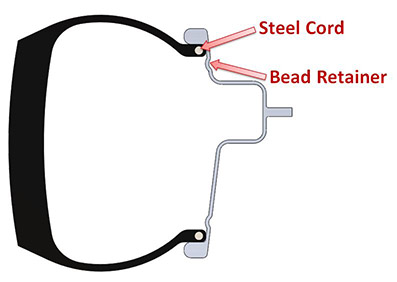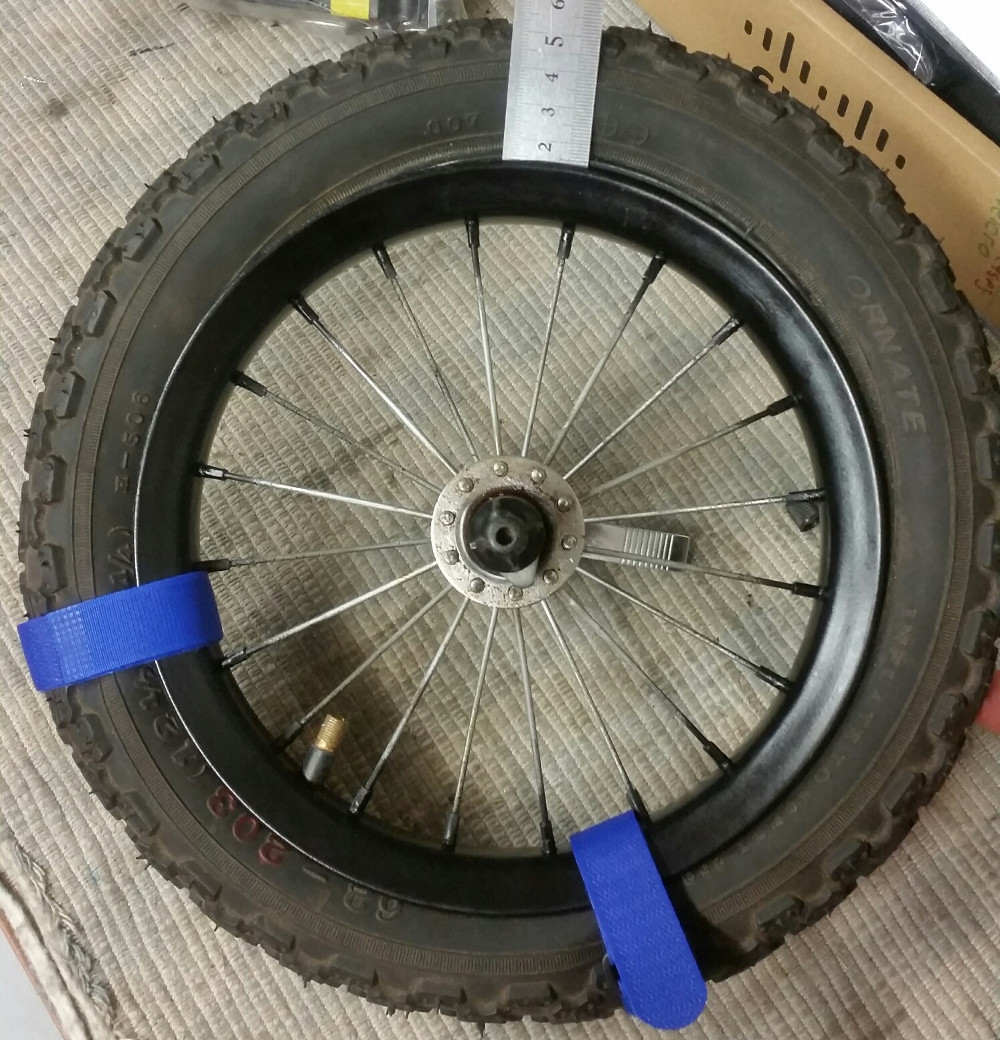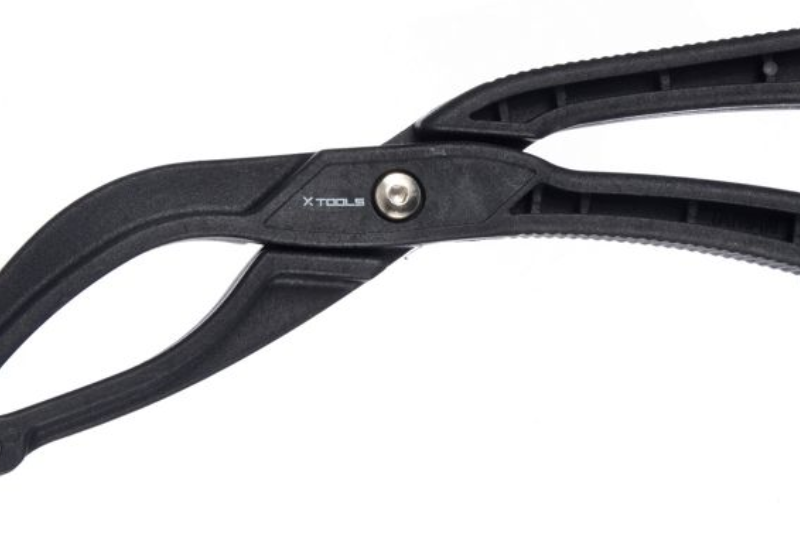I am having difficulties installing Schwalbe Marathon Plus tires (ETRTO 622-28 700x28C) on Jalco DRX-20 rims (16-622). If I am reading the Sheldon Browns tire sizing guide correctly, this is not a problem with tire width. I've tried this technique but the tire is too stiff to install it without levers. Last time I did it I broke two composite levers, this time I pinched two tubes. Previously I had a slightly wider rim (perhaps 18-622, but don't remember exactly) and while it was a little tricky to get them on, it was still do-able even without levers, whereas now I am thinking it's not possible. Is there any other tricks for how to get the tire on the rim? Could width be a factor in how difficult it is to fit? I'd be grateful for any advice.
-
2Quick Stick. And a rich vocabulary.– Daniel R HicksCommented Sep 2, 2019 at 2:19
-
"As easy as that," he says. :-P I used to use Conti Top Touring tires on my old touring bike - they also had a wire bead - and they were brutal to get on. I don't know if the rims weren't deep enough to give enough slack, or maybe they weren't truly 622s or what, but changing the tire usually cost me a lever or two. Problem finally "solved" when I crashed the bike and had to replace it. :-/– DavidWCommented Sep 2, 2019 at 3:36
-
Getting a fussy tire on a thin rim can be challenging. One thing to know is that you often have to work one side of the circle deep into the recess of the rim to give it enough slack to let the other side fit over the rim flange.– Daniel R HicksCommented Sep 2, 2019 at 12:17
-
Is that a particularly narrow rim? I have always put my Marathons on an ATB style bike with normal short levers; perhaps I used a sturdy screwdriver once. Obviously you want to make sure you don't pinch the tube. Otherwise it's just a question of force, and incidentally, this is the most common procedure getting people to the repair shop. I remember my mother asking her bike shop guy essentially what the secret procedure is and he simply smiled and shrugged and said "you just press it like so!"– Peter - Reinstate MonicaCommented Sep 2, 2019 at 17:29
3 Answers
Marathons are a known-pig of a tyre to fit to any rim. You're not alone.
The first fit is always hardest. After that they go a little easier.
Use three tyre levers, ideally ones with thinner blades/scoops/shovel ends.
Leave the tyre lying flat somewhere warm for a while before you start. This brings the rubber to a slightly more elastic state. Hanging up on a hook tends to slightly deform the tyre. I suggest you wash your rims while the tyres are laying out in the sunlight.
Wash your rims - it doesn't help get the tyre on, but you'll be less dirty and you'll have a better grip. Take the chance to renew your rim tape if needed - and if you do, use a thin tape not layers.
Now the hard bit. You want to get one bead into the rim all the way around. Make sure your tyre rotation is right at this time (guess how I know this...)
Then fit your tube's valve through the hole, and then lay the tube in the tyre. Leave the tube fully deflated.
Starting at the valve, get the second bead into the rim. Work around and at some point it will just stop popping over the rim's flange.
The trick now is to use velcro ties, tape, cable/zip ties, or even string. Go back to the valve, and make sure both tyre beads are sitting in the deepest valley of the rim.
Here's the profile of this rim so its not a lot different in the middle.

Many bike rims have a cross section profile like this:

where you can see a lot more space to be gained.
(semi-related - car tyres are extremely hard to manipulate. So they often have a massive valley in the rim for helping get tyres on and off and for strength.) 
Use your straps around tyre and rim (ie pass between two spokes) and cinch it down firmly to hold the bead in the valley. Work away from the valve in both directions. At least 3 ties, maybe a 6 will be needed. I like velcro ones cos they're reusable. My little 12" tyre went on with just 2 ties.

LOOSE
Notice the line around the tyre sidewall just above the rim?
Also while doing this you want to "pull" the tyre to gather up all the slack possible and draw that extra around to your last working area.
Imagine you're trying to get into some really tight cycling bibs/tights/knicks and you get the idea.
Back to the working face, use your tyre levers to slowly work both ends of the overlap. Do be careful to avoid pinching the tube cos it would suck to do this again.

Notice the amount of "slack" tyre at the top of the image. There's roughly 8mm of tyre exposed, and at the bottom that same line is below the edge of the rim.
If its just not working, you can use a spray bottle with clean warm water and some dish soap to lubricate the rim area. Never use oils or grease. The dishwash liquid will wash off easily and if trapped in the bead will do no harm.
Some people find this process easier with a helper - a third and fourth hand are quite convenient too as are a second pair of eyes.
Don't worry about the future - once the tyre has been on there for a while it will be slightly easier to remove and refit.
Some people swear by the Quick Stick / Stik
And some people prefer the X tool
I've never used the former, but I own the latter and while its interesting is only slightly different to normal, quality tyre levers.
-
3hold the bead in the valley Indeed. That's probably the most important factor in getting a tight tire on or off. For those that don't know: bicycle rims almost always have a "valley" in the middle of the rim. Getting the bead into that valley on the portions of the tire that are already on the rim makes forcing the rest of the bead over the rim a whole lot easier, and in the case of a tight tire you might HAVE TO hold the bead in that valley just to get the tire on or off. For relatively loose tires, you can even get the tire on or off without tools at all. Commented Sep 2, 2019 at 13:44
-
1Warm tyre has both softer rubber and slightly larger circumference than the cold one. Both is advantageous when changing. Clean and cold rim helps the same way. In summer I can change one tyre without any tools, in winter, changing the very same tyre on the very same rim is a nightmare.– CrowleyCommented Sep 2, 2019 at 15:45
-
1The valley part is really important. I’ve finally found this out after years of breaking tire levers and pinching tubes. Now I can install most road bike tires with my bare hands.– MichaelCommented Sep 3, 2019 at 12:27
-
1Roadside substitute for soapy water: spit. It lubricates better than drinking water– Chris HCommented Sep 3, 2019 at 14:22
-
2Excellent answer, I'll definitely have to remember the trick with the strap to fix the bead in the valley. However, I still have one suggestion: After putting in the tube, I always inflate it a bit to put it into a natural round shape. Then I start putting in the second bead, the slightly inflated tube preventing any possibility of pinching the tube. As the space for the tube gets smaller, I need to release the air from the tube to keep it essentially pressureless, so pressureless that it does not interefere with putting the bead in. I've never had a pinched tube with this method. Commented Sep 4, 2019 at 11:09
There's a tool for this specific job, which is less likely to pinch the tube than using a lever. A bead jack lifts the tyre onto the rim by hooking the bead. Kool Stop's version is sometimes branded tyre mate. That's what I use at home; on the road, good composite levers do the job, but then the tyre has usually stretched a little from being fitted.
It's not to do with the width of the rim, its down to manufacturing tolerances.
Some tyre/rim combinations go better than others, however only experience and a lot of internet searching tells you bad combinations.
Marathon plus however is well known to be tricky to fit, with the common 'joke' that it's a good job they never puncture, because once on, they'll never come off again.


